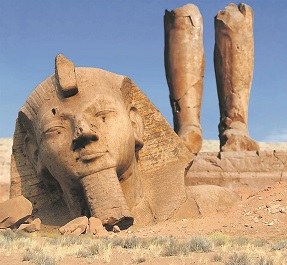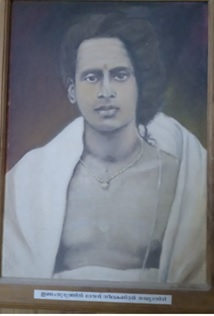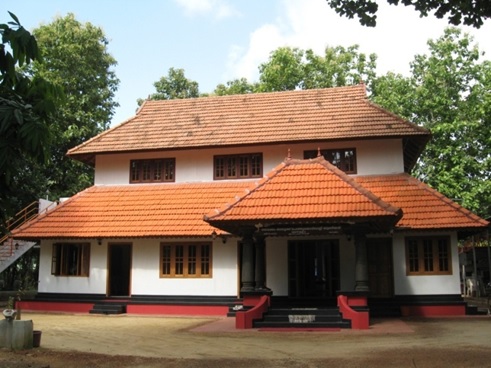Jan 05, 2026
Jan 05, 2026
Shelley’s Ozymandias is in a way a verdict of History against all those High and the Mighty who thought too much of themselves. In a beautifully composed sonnet, he explains what happens to the domineering royals or other megalomaniacs when History has its way.
Shelley quotes a traveller to an “antique land” who gives a vivid description of the dilapidated ruins of an enormous statue of a former ruler, obviously Ramses II of Egypt. “Two vast and trunkless legs of stone stand in the desert... / Near them, on the sand half sunk a shattered visage lies.”
But even in its ruined state, the fallen visage shows what the facial features of the old monarch were: “ whose frown/ And wrinkled lip, and sneer of cold command/ Tell that its sculptor well those passions read.”
 The pedestal has this inscription:
The pedestal has this inscription:
“I am Ozymandias, King of Kings,
Look on my works, ye mighty, and despair.”
Nothing beside remains. Round the decay
Of that colossal wreck, boundless and bare
The lone and level sands stretch far away.”
Whenever I chance upon this sonnet I wonder who among the high and the mighty in our part of the world would qualify for the title of Ozymandias: any Travancore monarch, ruthless dalawa or diwan, any military chieftain? Any among the several marauding invaders from north and south who made incursions into the state to plunder and pillage or, in modern times, any of the politicians who were at the helm of the state of Kerala?
I toyed with several names, who may well have some qualifications to fit in, but the one person I found supremely eligible for this title is Indamthuruthil Devan Neelakantan Nambiathiri, the shining symbol of arrogant orthodoxy in Travancore, and insolence personified, who kept no less a person than Mahatma Gandhi outside the precincts of his Mana (Brahmin mansion) on the ground that his entry would defile it.
What Nambiathiri (a variant of Namboothiri) did on March 10, 1925 when Gandhiji came for talks on the Vaikom Satyagraha issue was in fact far graver than what the South African Railway Ticket Examiner did to Gandhiji three decades back for travelling First Class in a train from Durban to Pretoria. In South Africa Gandhiji was just a young lawyer, comparatively unknown, but when he came on his first visit to Vaikom in March 1925 he was the heartbeat of an emerging nation and venerated all over as ‘Mahatma.’
But that was nothing important to Devan Neelakantan Nambiathiri who superciliously dismissed an invitation sent to him to come for talks with Gandhiji on the Vaikom issue that related to denial of rights to the oppressed sections of the society to use the roads surrounding the Vaikom Mahadeva Temple. This bar which took untouchability to abhorrent heights of unapproachability, peculiar to Travancore, had drawn nation-wide attention.
 A portrait of Devan Neelakantan Nambiathiri displayed at the Satyagraha Museum, Vaikom (PC: nandakumarr.blogspot.com)
A portrait of Devan Neelakantan Nambiathiri displayed at the Satyagraha Museum, Vaikom (PC: nandakumarr.blogspot.com)
Nambiathiri, who controlled the Mahadeva Temple and had suzerainty over several Namboothiri families, sent word that he was not used to going anywhere for talks and that if Gandhiji wanted he could well come over to his house. Gandhiji ignored the snub and graciously agreed to go over to his Mana the next day, along with his entourage, consisting of C Rajagopalachari, his Secretary Mahadev Desai,Ramdas Gandhi, T R Krishnaswamy Iyer and some others. That was the time when Nambiathiri showed his true obnoxious self: saying that entry of a Vaishya like Gandhiji into his household would defile it, he had a temporary foyer erected in front of his Mana for the talks. There too he had it such a way that he and other Namboothiris participating in the talks would not have to directly face Gandhiji and party.
The talks naturally failed to make any headway as he stubbornly refused to consider the suggestions made by Gandhiji. Nambiathiri’s stand was that whatever custom his community followed had the sanction and the direction of Adi Sankara.
And after Gandhiji left Nambiathiri displayed the height of his impertinence and intolerance by ostentatiously having a ritual cleansing of the premises to remove the pollution caused by the Mahatma.
It goes without saying that no one in British India, or elsewhere, would have dared to do such a thing to Gandhiji. It was reserved for the snobbish Kerala Brahmin sect to which Nambiathiri belonged, to show such an unpardonable discourtesy to the Mahatma.
The Indamthuruthi Mana that remained as symbol of Namboothiri orthodoxy is no more in existence now as it did in the 1920s. From the high citadel it occupied in the Travancore society in the past, it came down to nothing in the onward march of a vengeful, punishing History. Bereft of power and prestige and pelf, the Mana was finally sold to, of all people, the Toddy Tappers Union of Vaikom. The CPI affiliated Union subsequently pulled down the Mana but reconstructed it to the same specifications to serve as a lasting monument to, not what the Mana stood for in the past, but what it stood against: social equality.
It is not at all a broken monument like Ozymandias for Nambiathiri. The reconstructed and refurbished Indamthuruthi Mana, proudly displaying the name board of the Vaikom Taluk Toddy Tappers Union, stands erect, as a perennially chastising, punishing memorial for Devan Neelakantan and his clan who failed to see reason and failed to see History in the making.

The reconstructed Indamthuruthi Mana
which houses the office of the Vaikom Taluk Toddy Tappers Union.
(PC:georgekutty@ml.wikipedia)
16-Oct-2021
More by : P. Ravindran Nayar